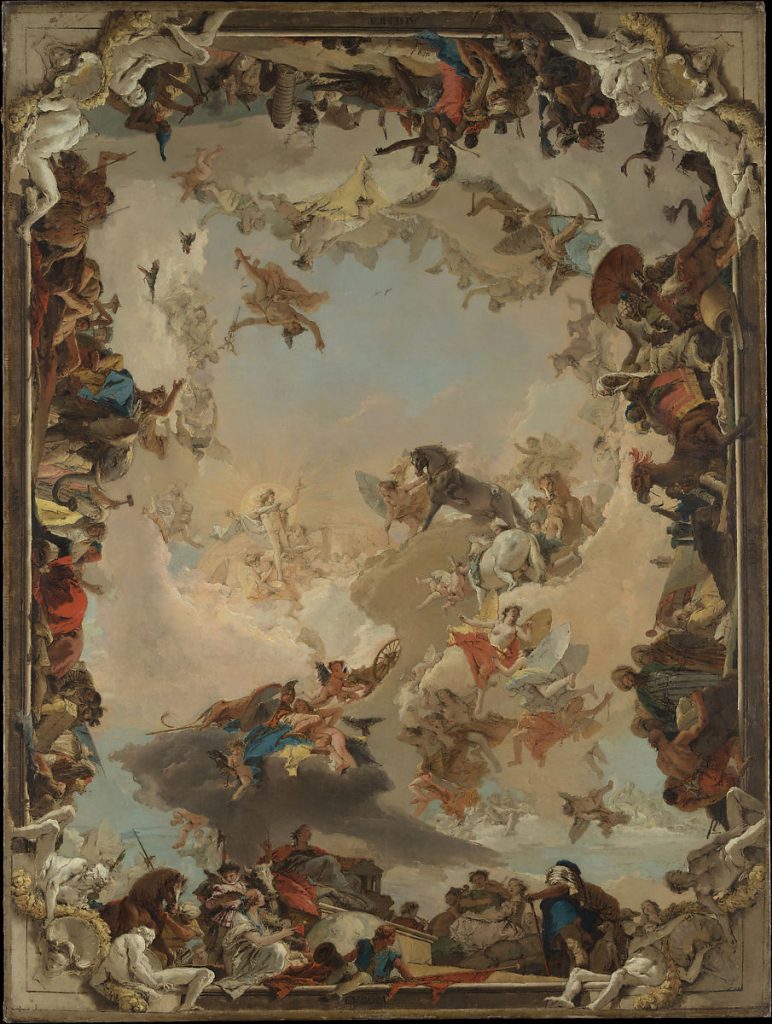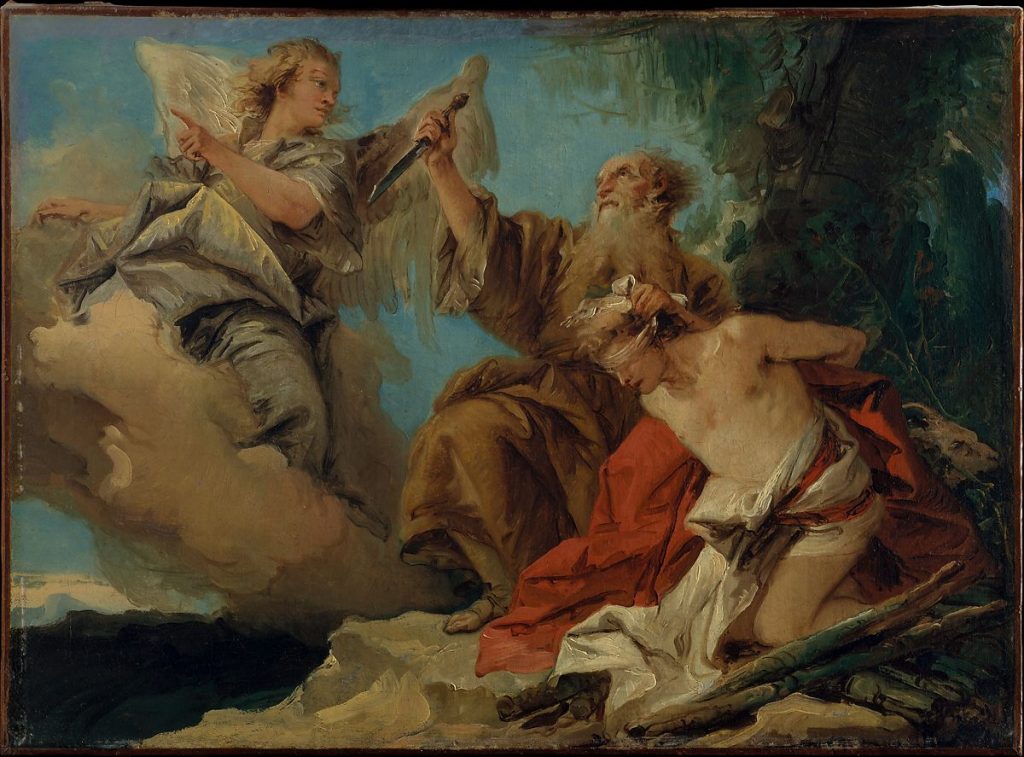Survey 2: Baroque, The Dutch Golden Age, Rococo, Neoclassicism, & Romanticism

Giambattista Tiepolo is the first name you will find on the list of the Venetian painters’ guild in 1717. He is also known as Giovanni Battista Tiepolo and was a notable Italian painter and printmaker who was often commissioned to create art for Germany and Spain during the Rococo era. His work commonly showcases popular Rococo themes as he often painted allegorical pieces of classical myths or incorporated layers upon layers of symbolism to tell stories within his art.


Tiepolo’s paintings carried all the whimsy and decor expected from the Rococo era, even though his style is defined and said to be influenced by the earlier Baroque period. Many of the characteristics in his work can be attributed to incorporating Baroque techniques. This is shown in the sense of drama and movement he brought to each painting. He was almost able to direct his figures among the canvas like actors on stage, conceiving large scenes with genuine emotions and dynamic compositions. All of his work was completed in his signature melancholic style that Tiepolo achieved through the use of strong ‘chiaroscuro’. This can be seen in famous works of his like “Madonna of Carmelo and the “Souls of Purgatory” and especially in “The Sacrifice of Isaac”.

I’m an avid lover of storytelling regardless of mediums, so over the process of this blog post, I’ve become a big fan of Giambattista Tiepolo’s work. I love to study the different techniques people use to get these stories across. Tiepolo used symbols to craft his own unique way of illustrating these stories. I love mythology and breaking down symbolism, so I found his work especially interesting research. His style reflected this love for telling stories, as though it’s complex and detailed, he also integrates the use of looser brushstrokes in his works. It seems almost as if he knows the exact quantity of detail and precisely where to put it to get the story of his artwork across in the most succinct way possible. I would like to be able to integrate this quality into my own work to improve my visual compositions and storytelling.

https://www.museodelprado.es/en/the-collection/art-work/vault-with-the-apotheosis-of-the-spanish-monarchy/6bd56ee8-029e-4534-ac84-c83292602d0b
Citations:
“The Banquet of Cleopatra – Giambattista Tiepolo – Google Arts & Culture.” Google, Google, https://artsandculture.google.com/asset/the-banquet-of-cleopatra-giambattista-tiepolo/wwFHnS1cmltkFw?hl=en.
Christiansen, Keith. “Giovanni Battista Tiepolo (1696–1770).” Metmuseum.org, Department of European Paintings, The Metropolitan Museum of Art, Oct. 2003, https://www.metmuseum.org/toah/hd/tiep/hd_tiep.htm.
“Giovanni Battista Tiepolo.” Encyclopædia Britannica, Encyclopædia Britannica, Inc., https://www.britannica.com/biography/Giovanni-Battista-Tiepolo.
“Giovanni Battista Tiepolo.” Wikipedia, Wikimedia Foundation, 1 Sept. 2021, https://en.wikipedia.org/wiki/Giovanni_Battista_Tiepolo.
Metmuseum.org, https://www.metmuseum.org/art/collection/search/437792.
Metmuseum.org, https://www.metmuseum.org/art/collection/search/437815.
“Vault with the Apotheosis of the Spanish Monarchy – the Collection.” The Collection – Museo Nacional Del Prado, https://www.museodelprado.es/en/the-collection/art-work/vault-with-the-apotheosis-of-the-spanish-monarchy/6bd56ee8-029e-4534-ac84-c83292602d0b.
One reply on “Tiepolo and the Stories within Stories”
Rachel,
Wow, excellent work on Tiepolo! You really have brought this to life. You have solid research and plenty of personal thoughts and insights to the pieces in question. Well written also! I like that you concentrated on lesser known work as in his etchings. Another thing he was known for is he was one of the most important fresco painters of his era. Anyhow I’m giving you a 2/2 for your fist two posts. Well Done!
Jeff